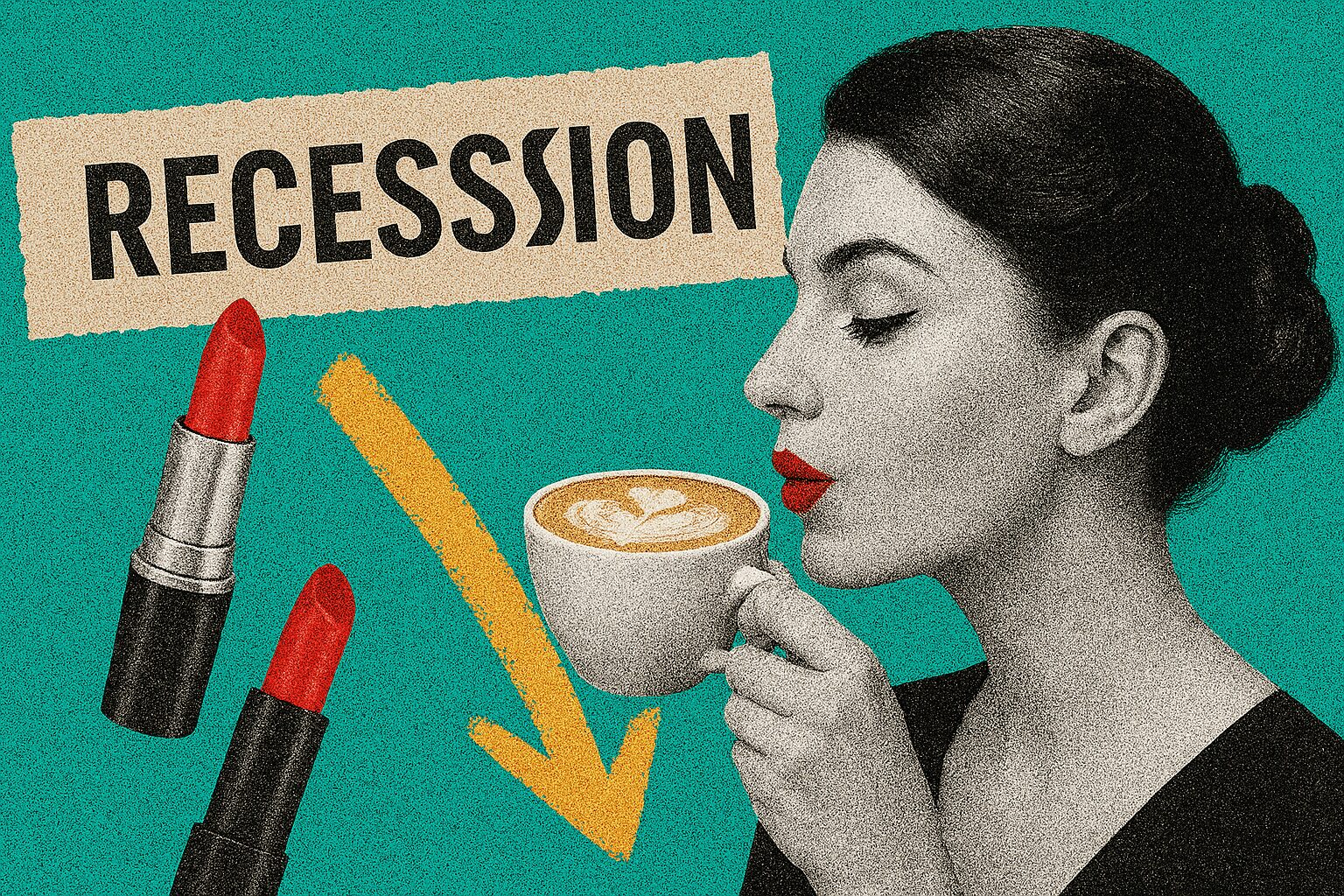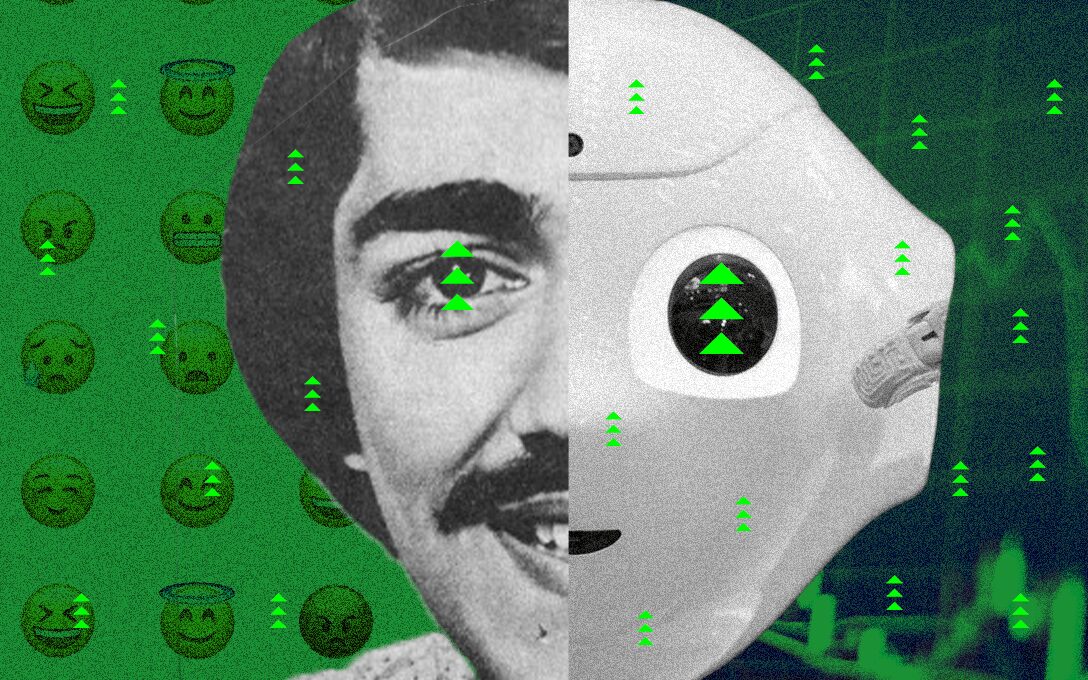Lipstick, Lattes & Loose Change: The Economy’s Strangest Early Warning System?

Unusual economic indicators that might just reveal more than official data.
Not every economic signal comes wrapped in jargon or spreadsheets. Some show up in far more stylish (and strange) ways — hiding in your drawer, your Netflix watchlist, or even that suspiciously frequent ₹49 mobile recharge.
From Estée Lauder’s Lipstick Index to Muthoot’s gold loan spikes, welcome to the gloriously unhinged world of offbeat economic indicators — which is part behavioural science, part WhatsApp uncle wisdom, and mostly vibes.
Are they accurate? Debatable.
Are they fun? Absolutely.
Do they tell you how people actually behave when money gets tight (or loose)? Weirdly, yes.
Disclaimer: This is an observational & satiric take, not an RBI bulletin. If you spot yourself in here, it’s probably just a coincidence. Or is it?
💄 The Lipstick Index
Tiny luxuries for big anxiety.
First coined by Estée Lauder execs, this one claims that lipstick sales rise during recessions. The theory? People skip the new Hermes bag but still treat themselves to a nice lipstick. A small indulgence = an emotional hedge.
So, if beauty counters are buzzing and the stock market’s tanking, it might just be the Lipstick Index doing its thing.
“Can’t afford therapy? Here’s a red that screams ‘resilient.’”
🩲 The Men’s Underwear Index
The silent scream of male spending cuts.
Alan Greenspan — yes, the former Federal Reserve Head— believed that men stop buying new underwear when things get really bad.
Why? Because no one sees it. So, it’s the first thing to go when you’re trimming the budget.
“We’ll know the recession is real when the boxers start falling apart.”
🪙 The Gold Loan Spike
The great Indian liquidity unlocks.
When the economy tightens, Indians don’t check their credit scores — they open the locker.
NBFCs like Muthoot and Manappuram have long seen spikes in gold loans during slowdowns. It’s not just about pawning heirlooms; it’s about quietly converting emotional capital into survival liquidity.
So, if your cousin is suddenly interested in “restructuring family assets,” it may not be inheritance planning; it’s the economy.
“Gold is eternal. Until EMIs are due.”
📲 The ₹49 Recharge Theory
When data packs shrink, so does consumer confidence.
No one tracks consumer sentiment like the average prepaid user. When full ₹249 recharges drop off and ₹49 top-ups spike, it’s not just frugality — it’s a quiet budget rebalancing in real time.
Telco internal dashboards (the ones they won’t show you) often pick up on these micro-shifts well before the GDP does.
“You know money’s tight when you uninstall Zomato, not to save money, but to stop the temptation.”
🏠 PG Vacancy Rates & Rent Drops
Your broker just ghosted you. That’s not a good sign.
In cities like Bengaluru, Gurugram, and Pune, PGs and shared rentals are like heartbeat monitors for white-collar employment. When job markets tighten, these spaces empty out. Fast.
If your broker is suddenly replying to texts within minutes and offering “first month free”, — yeah, something’s up.
“When the PG next door stays dark for weeks, the hiring freeze isn’t just a rumour.”
🌾 Desi Ghee Sales Drop
The great Indian downgrade of indulgence.
Desi ghee — the true GDP of Indian households — starts vanishing from carts when people are cutting corners. It’s one of the first things to go when budgeting becomes survival, especially in middle-class and rural kitchens.
Brands track this, quietly. But grandma always knew:
No ghee = no good.
“Recession is when the parathas go dry.”
🔍 Google Search Anxiety
Where panic leaves a search history.
Before economic stress hits the headlines, it hits Google:
“how to break FD without penalty”
“unemployment benefits India”
“sell gold near me”
If search trends were a crystal ball, they’d be screaming.
“The economy’s real-time pulse is in your browser history.”
📺 The Netflix & Chill (Alone) Index
Goodbye, dining out. Hello, buffering.
When times get tough, we drop the ₹800 dinner plans and cling to the ₹199 Netflix subscription. A surge in streaming = people choosing stay-ins over splurges.
“Because nothing says austerity like 12 hours of true crime and Maggi.”
💼 LinkedIn Activity Surge
We see you updating that Profile.
A sudden flurry of title changes, skill endorsements, and #OpenToWork banners? It’s not networking season — it’s anxiety season.
Job markets move quietly, and LinkedIn picks it up first.
“When ‘actively looking’ quietly becomes ‘desperately refreshing.’”
☕ The ₹300 Latte Pullback
Goodbye frappuccino, hello Nescafé.
When people start skipping their overpriced oat milk lattes for DIY brews, it’s not just about taste — it’s the budget talking.
Your neighbourhood barista feels the recession before most bankers do.
“Austerity starts with espresso.”
🪪 The Ration Card Revival
India’s OG economic fallback signal.
When things get really tight, it’s not Bitcoin people turn to — it’s ration cards. A sudden rise in ration card applications or MNREGA job demand isn’t just paperwork. It’s panic in bureaucratic form.
From subsidised rice to “100 days of work,” these schemes become lifelines when incomes dry up. And the paperwork spike? That’s the real-time distress signal economists won’t find in quarterly reports.
“When Excel budgets fail, we return to what really matters — atta, dal, and slightly faded photocopies.”
🖨️ Business Card Drought
When networking budgets dry up.
Less event merch, fewer printed cards, and even Canva starts getting quiet.
Turns out, when no one’s starting up, there’s no need to introduce yourself.
“If your friend who runs a design studio suddenly has time for lunch — things are not fine.”
🚇 The Ola-to-Metro Pivot
Luxury is a mindset. But also, surge pricing is rude.
When paychecks shrink and fuel prices rise, that familiar “Your driver will arrive in 23 minutes” screen suddenly feels like a personal attack.
People ditch cabs, rediscover the metro, and pretend the sweaty 9:00 AM local is a character-building experience.
It’s not just cost-saving. It’s economic Darwinism — survive the slowdown, and maybe even get a seat near the fan.
“From ‘I’ll book a cab’ to ‘Bro, which gate is the metro exit?’ — inflation humbles us all.”
🧵So, Should You Bet Your Portfolio on Lipstick Sales?
Absolutely not.
These signals won’t help you time the market or predict the next rate hike. But they will remind you that the economy isn’t just numbers — it’s people.
People who cut back on lattes, delay salon visits, doomscroll, add to cart and forget!
That human layer? It’s messy, emotional, and deeply unquantified — but it’s also where economic shifts quietly begin, long before the charts catch up.
So the next time you see your friend post “new skills unlocked” on LinkedIn or notice more people sporting suspiciously home-done haircuts — don’t just scroll past. You might be watching the economy shift, one behaviour at a time.
📚 Sources & Sanity-Checks
As tempting as it is to believe we made all this up in a caffeine-fueled fever dream, no, there’s actual research, reports, and real-world oddities behind these vibes:
- Lipstick Index – Coined by Leonard Lauder (Estée Lauder) during the early 2000s recession. Referenced in NYT and WSJ.
- Men’s Underwear Index – Popularised by Alan Greenspan, covered in NPR Planet Money and Fed commentaries.
- Google Trends – Used heavily in behavioural econ, especially post-COVID. See Bloomberg and Google Trends dashboards.
- Streaming Surges – Observed during multiple slowdowns. Netflix earnings calls and Statista reflect the pattern.
- LinkedIn Signals – Activity spikes analysed by Harvard Business Review and LinkedIn’s own reports.
- Coffee Index – Referenced by market watchers, including The Atlantic and CNBC.
- Gold Loans – Demand spikes during stress periods. Data from RBI, Economic Times, and NBFCs like Muthoot.
- Job Search Patterns – Naukri, Indeed, and ET HR World regularly publish job anxiety trend data.
- Ration Card Uptake – Surges tied to distress cycles. RTI data & IndiaSpend cover this well.
- Mobility Shifts – Ola/Uber dip + Metro rise documented in urban transport reports by MoHUA and Uber India.
- YouTube Jugaad Trends – Searches for “cut your own hair” or “₹100 makeup” spike during downturns. Spotted via YouTube India trends and CNBC-TV18.




